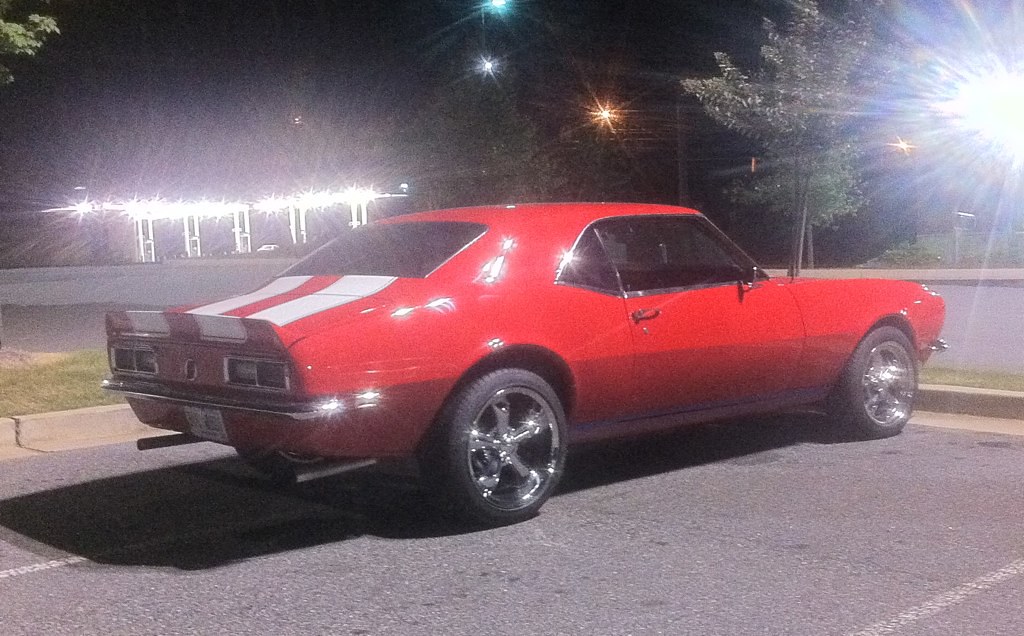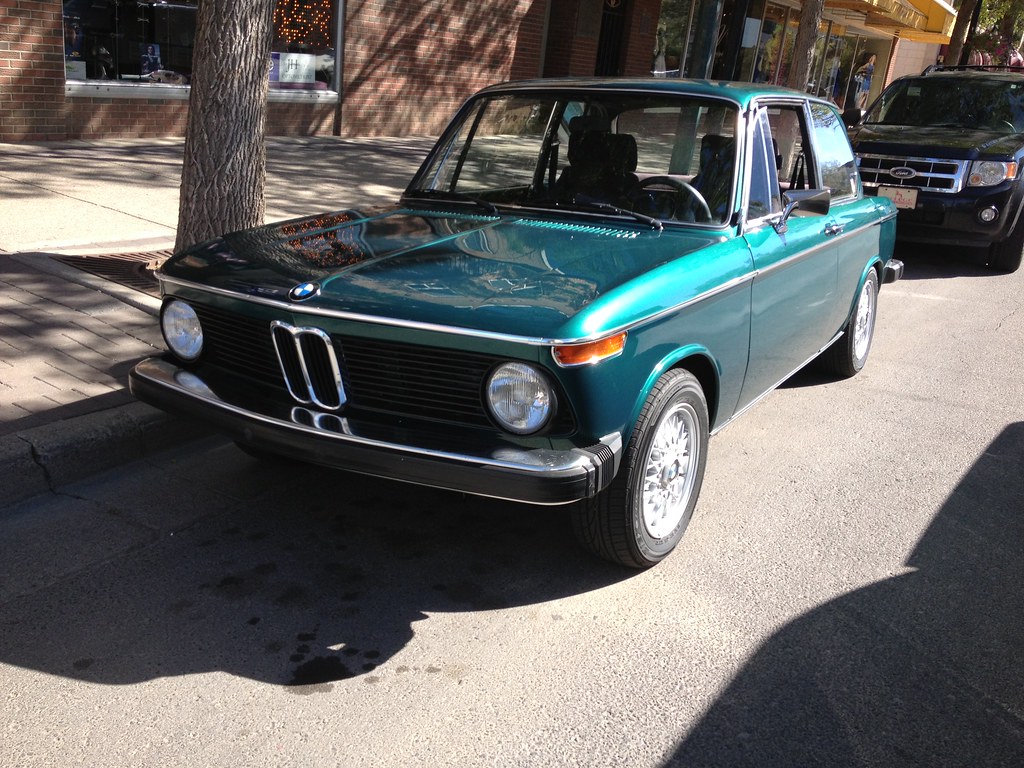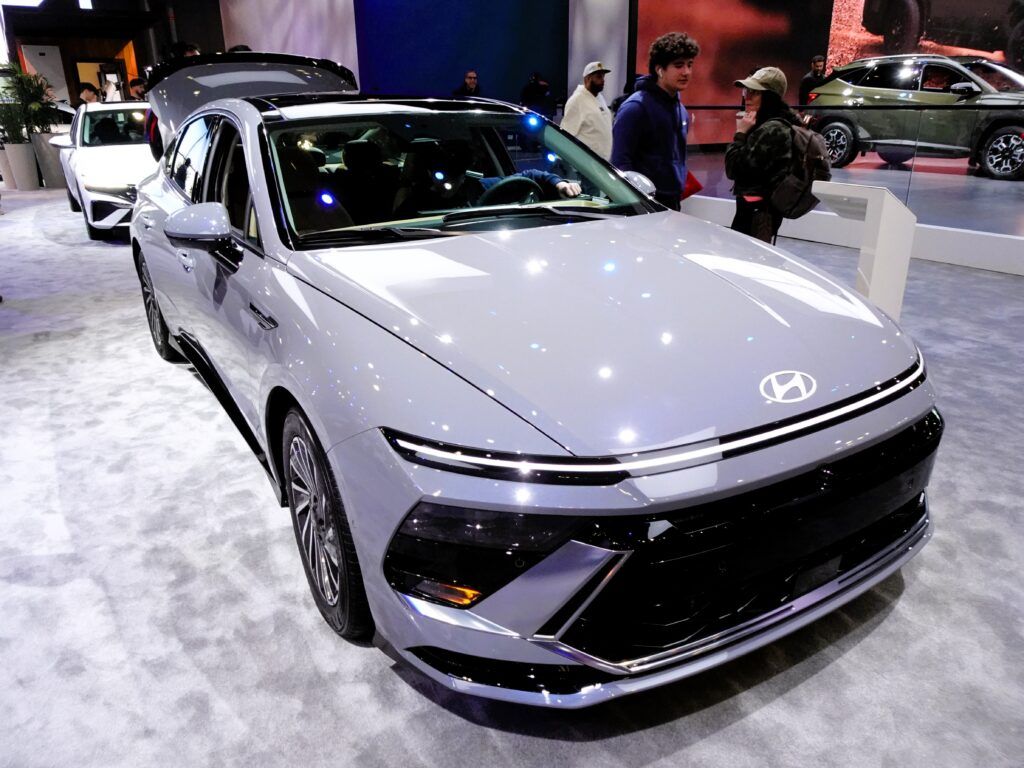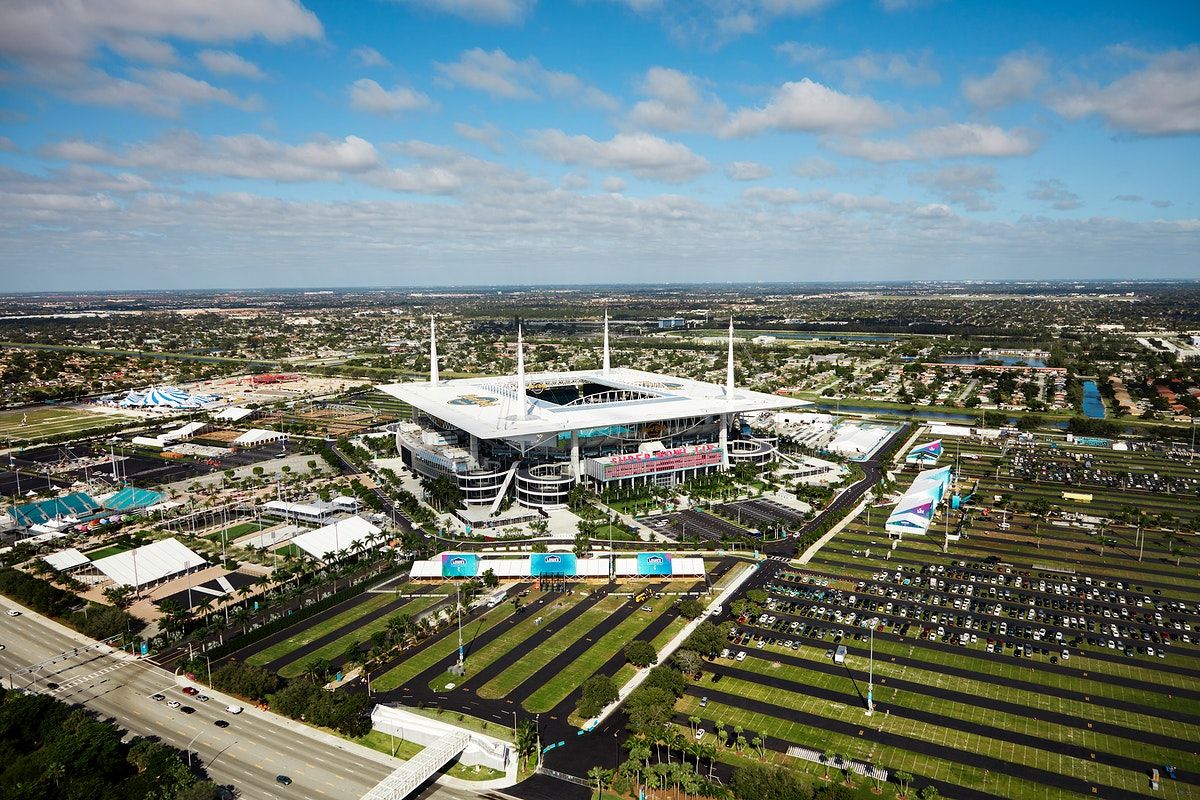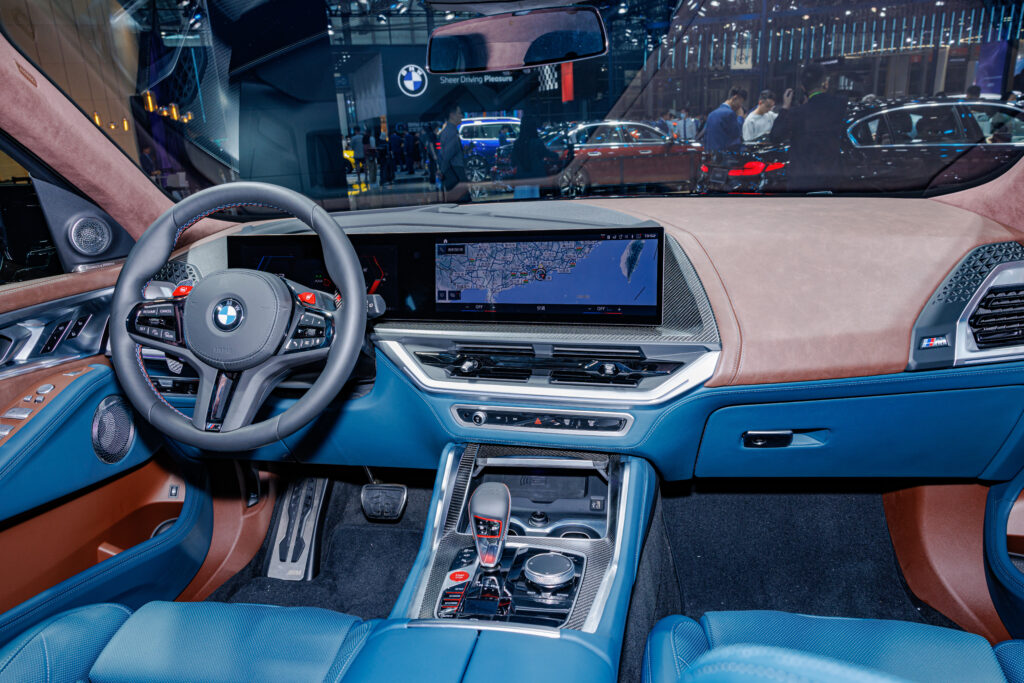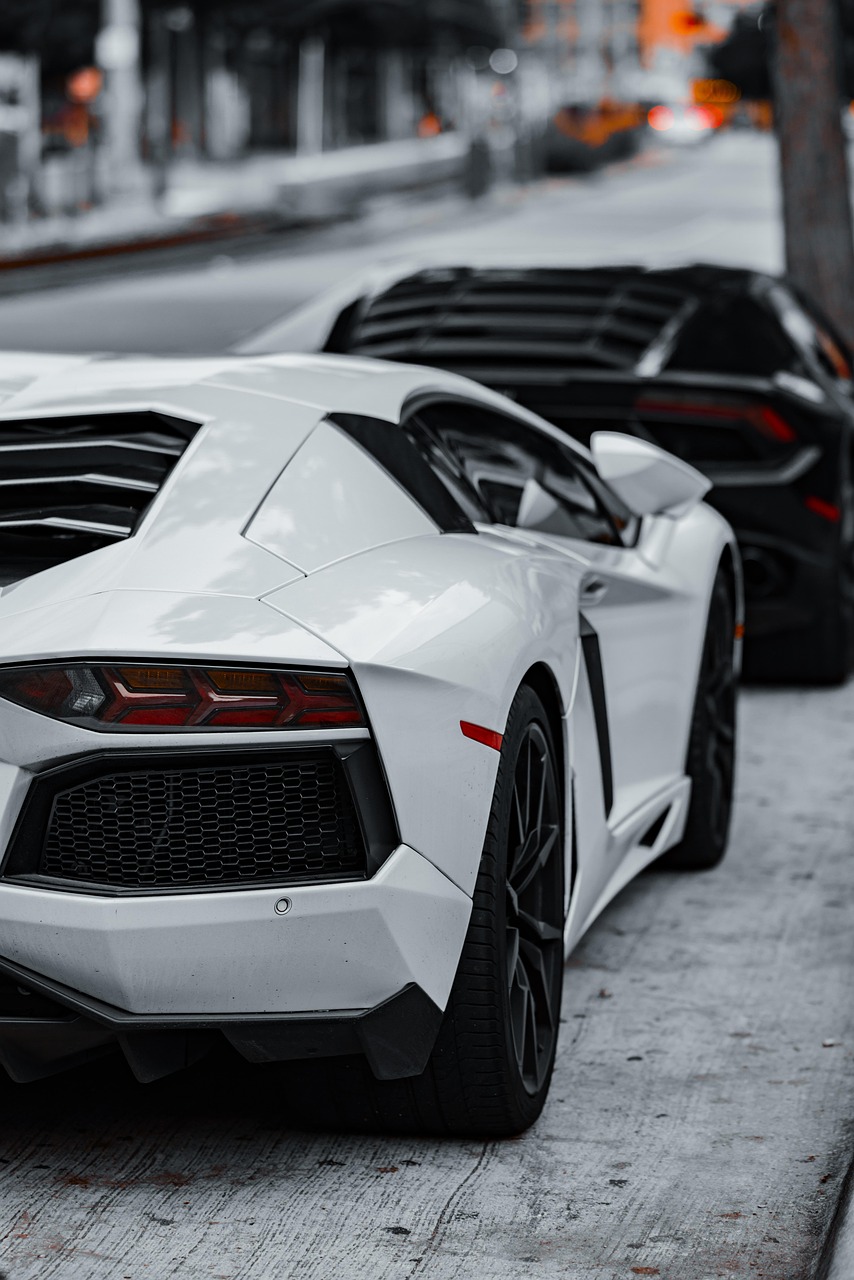
Once considered a rather speculative venture, classic cars have decisively shifted gears to become an increasingly popular and profoundly worthwhile investment in recent years. This isn’t just a fleeting trend; it’s a fundamental economic reality driven by scarcity. With a finite number of these exquisite machines ever produced, and examples only growing rarer each passing year, the vast majority of investment-grade classic vehicles are consistently appreciating in value. This remarkable trajectory offers a compelling blend of nostalgia, passion, and tangible financial returns that few other asset classes can match.
The allure of classic car ownership extends far beyond the impressive financial gains, which can see certain models appreciate by as much as 25% annually, significantly outpacing traditional market benchmarks. Many collectors attest that the greatest upside is the sheer joy of experiencing these increasingly rare examples firsthand, allowing them to engage with automotive history on a deeply personal level. The privilege of playing a role in the preservation of these mechanical marvels and the rich stories they embody, coupled with access to a vibrant community of like-minded enthusiasts, adds invaluable intangible returns to the investment.
While we’ve all undoubtedly heard the captivating tales of inexpensive barn finds transforming into multi-million-dollar treasures, the good news for today’s investor is that you haven’t entirely missed the boat. Dozens of vintage models are still steadily climbing in value year after year, positioning them as stellar long-term investments for those with foresight and passion. In this article, we’ll delve into a selection of these exceptional classic and vintage cars, providing data-driven insights into why they make prime candidates for your next significant automotive asset, starting with these remarkable machines.
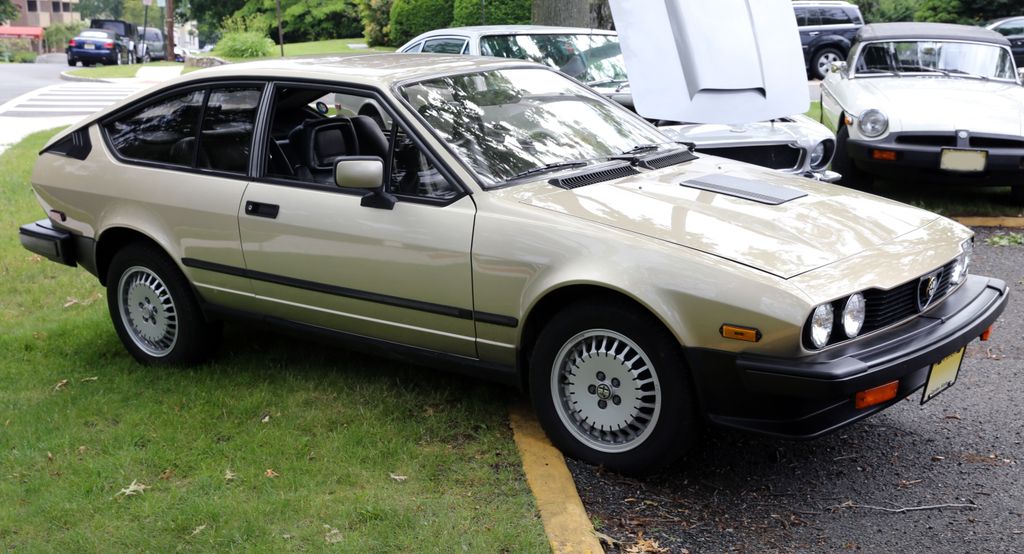
1. **Alfa Romeo GTV6**
The Alfa Romeo GTV6, an Italian coupe built upon a race-derived 116 type chassis, offers a distinctive driving experience and performance pedigree. Its unmistakable 1980s aesthetic has recently garnered significant renewed appreciation within collector circles. Despite over 20,000 units produced, diminishing its rarity somewhat on paper, the GTV6 has nonetheless been on a steady upward climb in value, a trend showing no signs of decelerating.
This appreciation is significantly bolstered by the broader market’s increasing interest in other vintage Alfa Romeo models, which continue to spike in value, pulling the GTV6 along. The most desirable examples for collectors and investors typically fall within the 1981-1986 production years, representing a sweet spot for sought-after features and performance. Under the hood, the heart of the GTV6 is its iconic 2.5L V6 engine, celebrated for its distinctive sound and spirited, engaging driving characteristics.
As a classic that blends performance with an undeniable European flair, the GTV6 offers a unique and compelling investment proposition. Its relatively accessible entry point compared to some other Italian marques, coupled with a demonstrated history of value appreciation, positions it as a smart choice for discerning investors. The cachet of owning an Alfa Romeo, a brand steeped in racing history and renowned for engaging driver’s cars, only enhances its long-term potential.
Car Model Information: 1986 Alfa Romeo GTV6
Name: Alfa Romeo GTV6
Caption: 1986 Alfa Romeo Alfetta GTV 2.0
Manufacturer: Alfa Romeo
Production: 1972–1987
Assembly: Arese,Rosslyn, Gauteng
BodyStyle: Sedan (automobile)
Layout: Front-engine, rear-wheel-drive layout
Related: Alfa Romeo Giulietta (116),Alfa Romeo Alfa 6,Alfa Romeo 90
Categories: 1980s cars, Alfa Romeo vehicles, Articles with short description, CS1 Dutch-language sources (nl), CS1 French-language sources (fr)
Summary: The Alfa Romeo Alfetta (Type 116) is a front-engine, five-passenger saloon and fastback coupé manufactured and marketed by Italian automaker Alfa Romeo from 1972 to 1987 with a total of over 400,000 units produced during its production run. The Alfetta was noted for the rear position of its transaxle (clutch and transmission) and its De Dion tube rear suspension — an arrangement designed to optimize handling by balancing front/rear weight distribution, as well as maintaining a low polar moment of inertia and low center of gravity. The interior of Coupé models featured a then unusual central tachometer placement — by itself, directly in front of the driver. The Alfetta name, which means “little Alfa” in Italian is derived from the nickname of the Alfa Romeo Alfetta (Tipo 159), a successful Formula One car which in its last iteration introduced in 1951, paired a transaxle layout to De Dion tube rear suspension — like its modern namesake.
Get more information about: Alfa Romeo Alfetta
Buying a high-performing used car >>>
Brand: Alfa Romeo Model: GTV6
Price: $25,849 Mileage: 16,061 mi.
Read more about: The Road Less Traveled (and Valued): 14 Classic Cars That Are Now Worth Less Than You Think
2. **BMW 2002**
Once a widely affordable and quintessential vintage ride, BMW’s nimble 2002 has gradually but consistently ascended in value over the last decade, establishing itself as a robust investment. This compact two-door coupe, deriving its name from its 2.0-liter engine and two-door configuration, now sees clean examples commanding prices anywhere from $20,000 to $50,000. All of its trims and years are generally desirable among collectors.
However, specific variants hold significantly higher investment potential due to their enhanced rarity. Among these, the rarer Targa, the distinctive 2000tii Touring, and especially the high-performance Turbo variants are considerably more valuable. Models manufactured before 1974 are also particularly sought-after, as this was when BMW transitioned to a square taillight setup, with earlier round taillight designs preferred by purists.
Powered by a robust 2.0L Inline-Four engine, the BMW 2002 delivers an engaging and pure driving experience that perfectly encapsulates the brand’s early “Ultimate Driving Machine” ethos. Its compact size, agile handling, and spirited engine make it a joy to drive, cementing its place in enthusiasts’ hearts. For investors, the 2002 offers profound personal enjoyment and a solid financial outlook, ensuring reliable long-term appreciation.
Car Model Information: BMW 2002
Name: BMW 02 Series
Caption: BMW 1600-2
Production: 1966–1977,837,038 units
Assembly: Munich
Class: Compact executive car
BodyStyle: 2-door coupé , 2-door convertible , 3-door hatchback
Layout: Front-engine, rear-wheel-drive layout
Engine: ubl
Wheelbase: cvt
Length: cvt
Width: cvt
Height: cvt
Weight: cvt
Transmission: 4-speed manual , 5-speed manual ,3-speed automatic
Successor: BMW 3 Series (E21)
Designer: Giovanni Michelotti
Manufacturer: BMW
Categories: 1970s cars, Articles with short description, BMW vehicles, CS1 German-language sources (de), CS1 Italian-language sources (it)
Summary: The BMW 02 Series is a range of sporty compact executive cars produced by German automaker BMW between 1966 and 1977, based on a shortened version of the New Class Sedans. The first 02 Series produced was the 1600-2 (later renamed 1602) in 1966. In 1975, the 02 Series was replaced by the E21 3 Series (except for the 1502 model, which continued until 1977).
Get more information about: BMW 02 Series
Buying a high-performing used car >>>
Brand: BMW Model: 2002
Price: $45,550 Mileage: 5,001 mi.
Read more about: From Dominance to Decline: Why These 12 Iconic Car Brands Are Fading Fast in Today’s Volatile Market

3. **Datsun 240/260/280Z**
Though at times referred to as a “poor man’s Porsche 911,” Datsun’s Z lineup consists of truly incredible vintage sports cars that still offer exhilarating performance and striking design. These models—including the 240Z, 260Z, and 280Z—have all demonstrated a remarkable and consistent climb in value over recent years. This appreciation is particularly noteworthy considering that only a decade or two ago, these cars were readily available for a bargain.
The Datsun Z series holds broad investment appeal across its desirable years, spanning from 1969 to 1978, with each variant finding its dedicated following. Whether one prefers the pure original 240Z, the slightly refined 260Z, or the more developed 280Z, all models are increasingly sought after by collectors. Interestingly, modified race-build Zs also appear to hold their value well, indicating robust demand for the underlying platform itself.
Under the hood, these Japanese legends are typically powered by a reliable 2.4L Straight-Six engine, renowned for its smooth power delivery and robust performance. This engine, combined with the Z’s balanced chassis and sleek aerodynamics, created a formidable package. The continued ascent in value of the Datsun Z cars underscores a broader market trend of Japanese classics gaining significant traction in the collector market.
Read more about: Future Fortunes on Four Wheels: 14 Classic Cars You Need to Buy Now Before Their Value Explodes

4. **International Harvester Scout (& Scout II)**
While the original Ford Bronco has seen its value skyrocket, often becoming unobtainable for many, the International Harvester Scout and its successor, the Scout II, present a fantastic and more accessible alternative in the burgeoning vintage 4×4 market. These rugged American-made models still offer a surprisingly fair entry price, attracting investors seeking both utility and classic charm. Some specimens can still be acquired for as little as $10,000 to $15,000.
Pristine, original examples of the Scout, however, can command prices as high as $80,000, illustrating the wide range of investment potential based on condition. The broad desirability of the International Harvester Scout spans its entire production run, from 1961 to 1980, offering numerous opportunities for investors to find a suitable example. Their versatility further boosts appeal, as both the Scout and Scout II are amazing candidates for restomod off-road builds.
This means that even examples not in concours condition can be transformed into highly desirable and valuable custom vehicles, catering to a significant and growing segment of the market. Various robust engine options, from i4s to V8s, ensured their dependable workhorse legacy. As the vintage SUV and 4×4 market grows, the Scout remains an undervalued asset with significant upside, blending utilitarian styling, historical significance, and modification potential.
Car Model Information: 1978 International Harvester Scout
Name: International Scout
Caption: 1978 Scout II wagon
Manufacturer: International Harvester
Production: 1961–1980
Class: Full-size,SUV
Assembly: Fort Wayne, Indiana
BodyStyle: SUV
Layout: Front-engine, rear-wheel-drive layout,rear-wheel drive
Categories: 1970s cars, 1980s cars, All-wheel-drive vehicles, All articles needing additional references, All articles with dead external links
Summary: The International Scout is an off-road vehicle produced by International Harvester from 1960 to 1980. Created as a competitor for the Jeep CJ, the Scout was the precursor of more sophisticated SUVs, including the Ford Bronco, Chevrolet Blazer, and the later Jeep Cherokee. Produced for two generations, the Scout was designed as an open-top two-door truck as a base vehicle with options to configure it as a station wagon, half-cab pickup truck, or a soft-top convertible. International Harvester assembled the model line in its facility in Fort Wayne, Indiana.
Get more information about: International Scout
Buying a high-performing used car >>>
Brand: International Harvester Model: Scout
Price: $25,849 Mileage: 16,061 mi.
Read more about: Future Fortunes on Four Wheels: 14 Classic Cars You Need to Buy Now Before Their Value Explodes
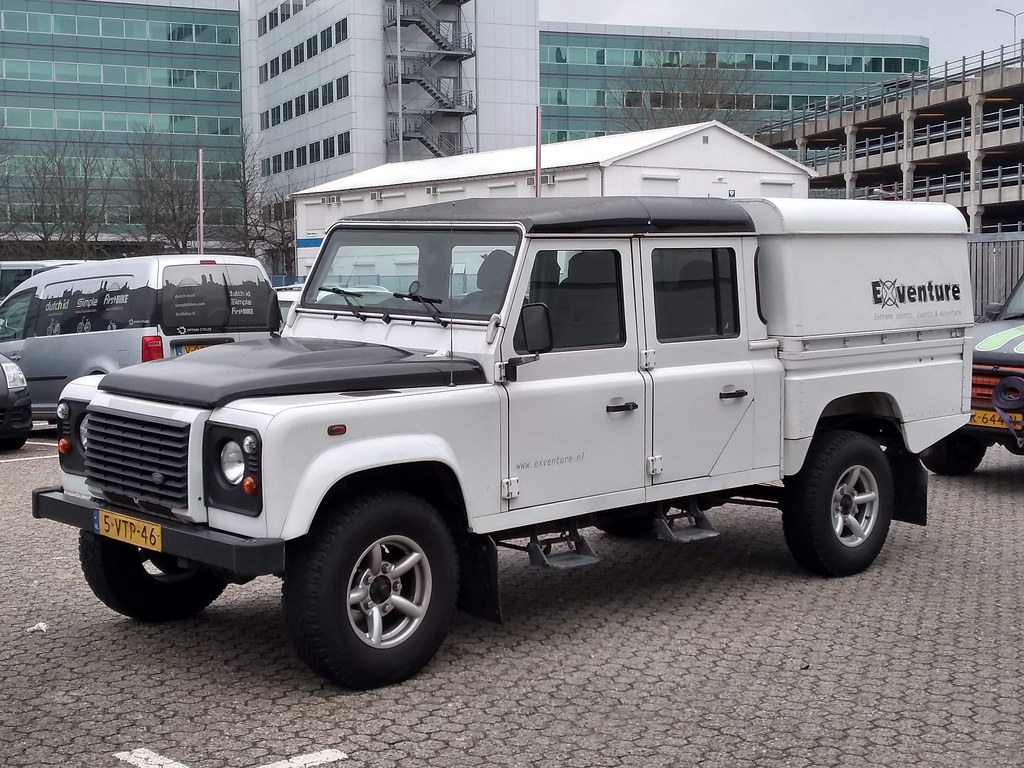
5. **Land Rover Defender**
The Land Rover Defender, even in its classic iterations, is already a relatively expensive vehicle, yet its price continues to climb steadily year after year, solidifying its status as a consistently fantastic investment. Its legendary off-road capabilities, iconic utilitarian design, and robust, no-nonsense build quality cement its place as a global automotive icon, highly sought after worldwide. For those with the initial budget, the Defender presents a clear and proven path to potential significant returns.
A key advantage for investors lies in the availability of “basket-case” examples that can often be purchased at a lower entry point. This creates significant value-add opportunities, especially with the existence of highly specialized and expert restoration outfits that focus exclusively on vintage Defenders. These specialists possess the know-how to meticulously transform a neglected, low-cost acquisition into a pristine, high-value asset, unlocking substantial profit margins.
The desirable years for investment typically range from 1983 to 1997, a period during which the Defender truly established its global reputation and refined its distinctive design language. Offered with a range of engines, including 2.5L Petrol, Diesel, or Turbodiesel inline-fours, and a powerful 3.5L V8, its powertrains were rugged. Strong global demand, driven by reputation, heritage, and the growing vintage utility market, makes it a premier classic car investment.
Car Model Information: 2012 Honda Civic Sport
Caption: 2012 Land Rover Defender 90 (Australia)
Name: Land Rover Defender
Manufacturer: ubl
Class: Small offroader
Aka: Land Rover 90, Ninety, 110, One Ten, One Two Seven (1983–1990)
Production: ubl
Predecessor: Land Rover Series III
Successor: Land Rover Defender (L663)
Assembly: Moorebank, New South Wales,Brazil
Layout: Front-engine, four-wheel-drive layout,four-wheel drive
Categories: 1990s cars, 2000s cars, 2010s cars, All-wheel-drive vehicles, All articles with unsourced statements
Summary: The Land Rover Defender (introduced as the Land Rover One Ten, joined in 1984 by the Land Rover Ninety, plus the extra-length Land Rover One Two Seven in 1985) is a series of British off-road cars and pickup trucks. They have four-wheel drive, and were developed in the 1980s from the Land Rover series which was launched at the Amsterdam Motor Show in April 1948. Following the 1989 introduction of the Land Rover Discovery, the term ‘Land Rover’ became the name of a broader marque, no longer the name of a specific model; thus in 1990 Land Rover renamed them as Defender 90 and Defender 110 and Defender 130 respectively. The vehicle, a British equivalent of the Second World War derived (Willys) Jeep, gained a worldwide reputation for ruggedness and versatility. With a steel ladder chassis and an aluminium alloy bodywork, the Land Rover originally used detuned versions of Rover engines. Though the Defender was not a new generation design, it incorporated significant changes compared to the Land Rover series, such as adopting coil springs front and rear. Coil springs offered both better ride quality and improved axle articulation. The addition of a centre differential to the transfer case gave the Defender permanent four-wheel-drive capability. Both changes were derived from the original Range Rover, and the interiors were also modernised. Whilst the engines were carried over from the Series III, a new series of modern and more powerful engines was progressively introduced. Even when ignoring the series Land Rovers and perhaps ongoing licence products, the 90/110 and Defender models’ 33-year production run were ranked as the sixteenth longest single-generation car in history in 2020. In 2020, Jaguar Land Rover introduced an all new generation of Land Rover Defender Land Rover Defender (L663) switching from body on chassis to integrated bodywork and from live, rigid axles to all around independent suspension.
Get more information about: Land Rover Defender
Buying a high-performing used car >>>
Brand: Land Rover Model: Defender
Price: $25,849 Mileage: 16,061 mi.
Read more about: Robert F. Kennedy Jr.’s Divisive Path: Examining His Controversial Public Health Stances Amidst His Role as Secretary of Health and Human Services
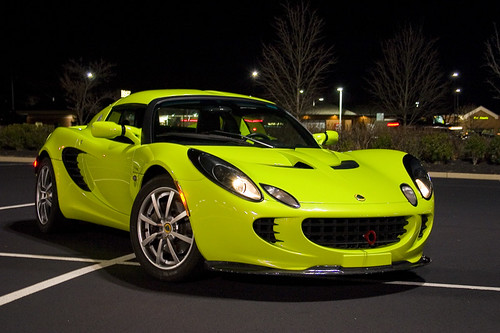
6. **Lotus Elise**
The Lotus Elise stands as a remarkable testament to uncompromising engineering and an unrelenting, almost obsessive focus on minimizing weight, a core philosophy that has defined the Lotus marque for decades. This single-minded pursuit of lightness resulted in one of the best-performing and best-handling sports cars ever produced, delivering an incredibly pure, unadulterated, and exhilarating driving experience. This dedication makes the Elise extraordinarily popular among automotive enthusiasts.
This fervent popularity among a passionate base of enthusiasts has, in turn, transformed the Lotus Elise into a prime candidate for an investment vehicle with strong appreciation potential. Its unique position in the sports car pantheon—offering exotic performance sensations without necessarily commanding the exotic price tags of some competitors—makes it highly attractive to a broader range of collectors. Desirable investment years span from 1996 to 2011, encompassing both the early, purist Series 1 and the more refined Series 2 models.
The Elise is typically powered by a reliable 1.8L Inline-Four engine, which, when combined with its featherlight curb weight, provides surprising acceleration and world-class handling capabilities that punch far above its weight class. Its distinctive design, race-bred chassis, and the sheer joy it delivers on the road or track contribute significantly to its enduring collectibility. As the automotive market increasingly values cars that offer an authentic, connected, and analog driving experience, the Lotus Elise stands out as a smart investment.
Car Model Information: 2005 Lotus Elise Supercharged
Caption: Lotus Elise Supercharged
Name: Lotus Elise
Manufacturer: Lotus Cars
Production: 1996–2021,35,124 produced
Assembly: Hethel,Norfolk,England
Predecessor: Lotus Elan#Elan M100
Successor: Lotus Emira,Lotus Theory 1
Class: Sports car
BodyStyle: Targa top,Roadster (automobile)
Layout: Rear mid-engine, rear-wheel-drive layout
Platform: Lotus small car platform
Sp: uk
Categories: 2000s cars, 2010s cars, All articles with dead external links, All articles with unsourced statements, Articles with dead external links from November 2016
Summary: The Lotus Elise is a sports car conceived in early 1994 and released in September 1996 by the British manufacturer Lotus Cars. A two-seater roadster with a rear mid-engine, rear-wheel-drive layout, the Elise has a fibreglass body shell atop its bonded extruded aluminium chassis that provides a rigid platform for the suspension, while keeping weight and production costs to a minimum. The Elise was named after Elisa Artioli, the granddaughter of Romano Artioli who was chairman of Lotus and Bugatti at the time of the car’s launch. Production of the Elise, Exige and Evora ended in 2021. It was replaced by the Lotus Emira.
Get more information about: Lotus Elise
Buying a high-performing used car >>>
Brand: Lotus Model: Elise
Price: $72,999 Mileage: 25,000 mi.
Read more about: The Electrified Horizon: 14 Game-Changing EVs Poised to Redefine the Automotive Industry in 2026
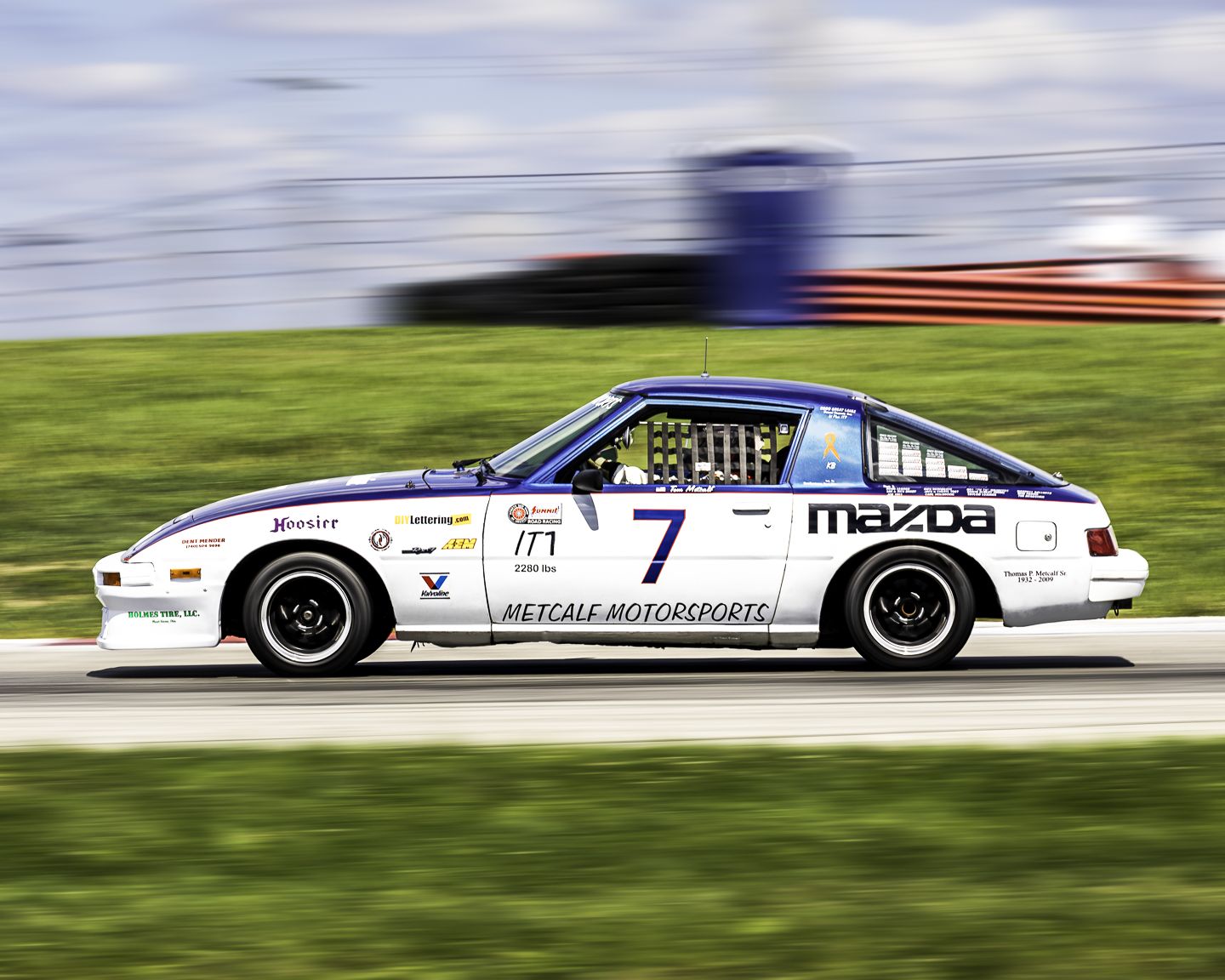
7. **Mazda RX-7**
The Mazda RX-7 beautifully marries sleek, aerodynamic Japanese-designed bodywork with the truly unique and innovative Wankel rotary engine, solidifying its status as nothing short of a modern-day classic. The burgeoning popularity of Japanese Domestic Market (JDM) cars in recent times has significantly bolstered its market value, with clean examples of the RX-7 now routinely fetching close to $50,000. This impressive upward trend indicates strong and growing investment potential.
Its idiosyncratic Wankel rotary engine truly sets the RX-7 apart, contributing immensely to its mystique and value. This distinct powerplant, known for its high-revving, compact size, and incredibly smooth power delivery, offers a driving experience unlike any other piston-engined car. Combined with its balanced chassis, near-perfect weight distribution, and stunning aerodynamics, it was a formidable force in motorsport and an exhilarating street car.
The desirable years for investors primarily fall between 1985 and 1997, encompassing the highly acclaimed FC and FD generations, which are particularly sought after for their refined performance and timeless design. Available with 1.1L, turbocharged 1.1L, and 1.3L Wankel Rotary engines, its rising value reflects collector recognition for innovation. The RX-7 offers JDM cool, rotary engine mystique, and undeniable visual appeal as a compelling investment.
We’ve just explored some truly compelling classic car investment opportunities. Now, let’s turn our attention to an additional eight models that promise significant appreciation, building on the foundation of automotive heritage and market demand. After that, we’ll delve into the critical aspects of navigating this unique investment landscape, covering everything from the undeniable upsides to the often-overlooked downsides, how to conduct your research, prevailing market trends, inherent risks, and expert strategies to maximize your financial returns.
Car Model Information: 1979 Mazda RX-7 GXL 2D Coupe
Name: Mazda RX-7
Caption: 1979 Mazda RX-7 R2 (FD3S)
Manufacturer: Mazda
Aka: Mazda Savanna RX-7 (Japan, 1978–1991),Mazda ɛ̃fini RX-7 (Japan, 1991–1997)
Class: Sports car
Production: 1978–2002,811,634 produced
Assembly: Hiroshima
Platform: Mazda F platform
Layout: Front-engine, rear-wheel-drive layout#Front mid-engine, rear-wheel-drive layout
Predecessor: Mazda RX-3
Successor: Mazda RX-8
Categories: 1980s cars, 1990s cars, 2000s cars, 24 Hours of Le Mans race cars, All articles needing additional references
Summary: The Mazda RX-7 is a front mid engine, rear-wheel-drive, rotary engine-powered sports car, manufactured and marketed by Mazda from 1978 through 2002 across three generations, all of which incorporated the use of a compact, lightweight Wankel rotary engine. The first-generation RX-7, codenamed SA (early) and FB (late), is a two-seater two-door hatchback coupé. It featured a 12A carbureted rotary engine as well as the option for a 13B rotary engine with electronic fuel injection in later years. The second-generation RX-7, carrying the internal model code FC, was offered as a two-seater coupé with a 2+2 option available in some markets, as well as in a convertible body style. This was powered by the 13B rotary engine, offered in naturally aspirated or turbocharged forms. The third-generation RX-7, model code FD, was offered as a two-seater coupé with a 2+2 version offered as an option for the Japanese market. It featured a sequentially turbocharged 13B REW engine. More than 800,000 RX-7s were manufactured over its lifetime.
Get more information about: Mazda RX-7
Buying a high-performing used car >>>
Brand: Mazda Model: RX-7
Price: $13,991 Mileage: 52,352 mi.
Read more about: The Ultimate Nineties Rewind: 15 Coolest Cars of the Decade That Still Fuel Our Automotive Dreams
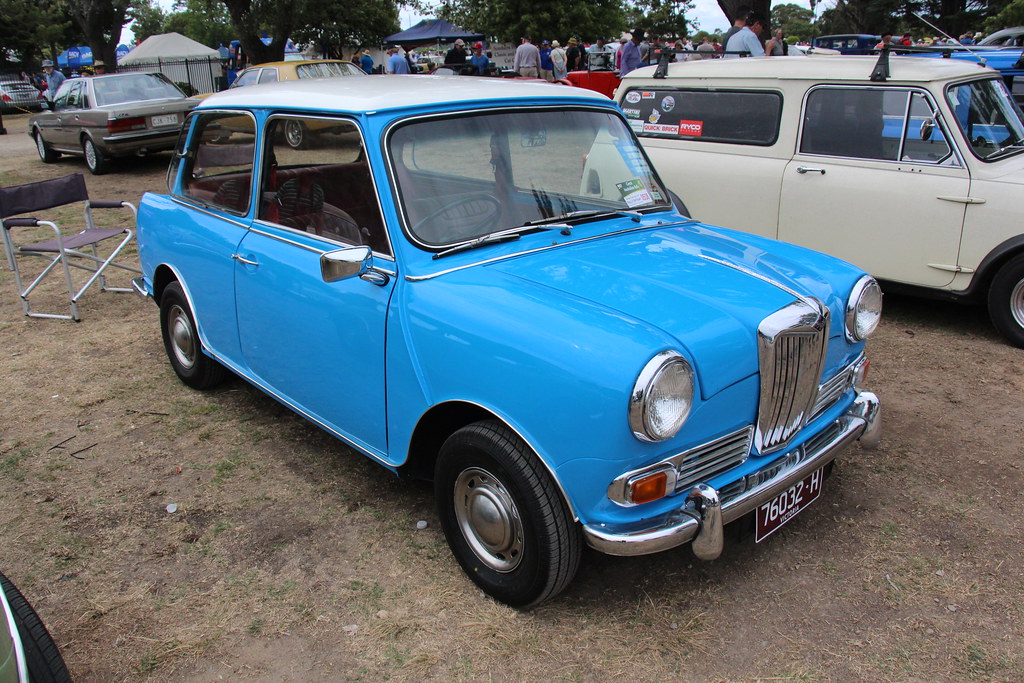
8. **Mini Cooper**
The original Mini Cooper, a cherished 1960s British icon, sees renewed interest due to today’s Mini revival. This fuels steady value increases for well-preserved vintage examples, a rewarding asset for collectors.
Its universal appeal stems from charming aesthetics and historical significance. The Mini’s versatility broadens its investor base, suitable as a show car or spirited weekend companion.
Desirable years span 1959-2000. Consistent appreciation, driven by nostalgia and a growing collector base, positions it as an accessible, smart, and emotionally rewarding investment.
Car Model Information: 1967 MINI Hardtop Cooper
Sp: uk
Caption: 1967 Morris Mini-Minor (first one built)
Name: Mini
Aka: Austin 850,Rover Mini,Austin Cooper,Austin Mini,Austin Partner,Austin Seven,Innocenti Mini,Leyland Mini,Morris 850,Morris Mascot,Morris Mini Minor,Riley Elf,Wolseley 1000 (South Africa),Wolseley Hornet
Layout: Front-engine, front-wheel-drive layout
Manufacturer: British Motor Corporation,British Leyland,Rover Group
Production: 1959–2000 (5.38 million)
Class: City car
BodyStyle: sedan (car),convertible,Station wagon,sedan delivery,coupe utility
Engine: BMC A-series engine,Straight-four engine
Designer: Alec Issigonis,John Sheppard (car designer)
Transmission: 4-speed manual,AP automatic transmission,5-speed manual (optional extra on some later models)
Length: cvt,cvt,cvt
Width: cvt
Height: cvt
Weight: cvt
Wheelbase: cvt,cvt
Related: Mini Moke,Austin Metro,Innocenti Mini,Mini Wildgoose,Mini Marcos
Successor: Austin Metro,Mini Hatch
Assembly: Panmure, New Zealand
Categories: 1960s cars, 1970s cars, 1980s cars, 1990s cars, 2000s cars
Summary: The Mini is a very small two-door, four-seat car, produced for four decades over a single generation, with many names and variants, by the British Motor Corporation (BMC) and its successors British Leyland and the Rover Group, and finally (briefly) under BMW ownership. Minis were built as fastbacks, estates, convertibles, and various other body styles. Minus a brief 1990s hiatus, from 1959 into 2000, an estimated 5.38 million of all variations combined were built, and the Mini’s engines also powered another 2 million Mini Metros, though the Mini eventually outlasted its successor. Initially, the Mini was marketed under the Austin and Morris names, as the Austin Seven and Morris Mini-Minor; the Austin Seven was renamed Austin Mini in 1962 and Mini became a marque in its own right in 1969. Retrospectively, the car is known as the “Classic Mini” to distinguish it from the modern MINI family of vehicles produced since 2001 by German carmaker BMW, who took ownership of the Mini name following the sale of Rover Group in 2000. This distinctive two-door car was designed for BMC by Sir Alec Issigonis. Its space-saving transverse engine and front-wheel drive layout – allowing 80% of the area of the car’s floorpan to be used for passengers and luggage – influenced a generation of car makers. The front-wheel-drive, transverse-engine layout were used in many other “supermini” style car designs such as Honda N360 (1967), Nissan Cherry (1970), and Fiat 127 (1971). The layout was also adapted for larger subcompact designs. In 1999, the Mini was voted the second-most influential car of the 20th century, behind the Ford Model T, and ahead of the Citroën DS and Volkswagen Beetle. It is also considered an icon of 1960s British popular culture. The Mini Mark I had three major UK updates: the Mark II, the Clubman, and the Mark III. Within these was a series of variations, including an estate car, a pick-up, a van, and the Mini Moke, a jeep-like buggy. The performance versions, the Mini Cooper and Cooper “S”, were successful as both race and rally cars, winning the Monte Carlo Rally in 1964, 1965, and 1967. The Mini was manufactured in England at the Longbridge plant in Birmingham located next to BMC’s headquarters and at the former Morris Motors plant at Cowley, as well as in Australia (Victoria Park/Zetland BMC Australia factory) and later also in Spain (Authi), Belgium, Italy (Innocenti, as the Innocenti Mini), Chile, Malta, Portugal, South Africa, Uruguay, Venezuela, and Yugoslavia (IMV). In 1980, British Leyland launched the Mini’s follow-up, the Austin Metro, however the Mini outlasted it and continued to be produced at Longbridge until October 2000.
Get more information about: Mini
Buying a high-performing used car >>>
Brand: Mini Model: Cooper
Price: $13,000 Mileage: 59,790 mi.
Read more about: South Korea’s Master Class: Navigating the Complexities of a Second Donald Trump Administration
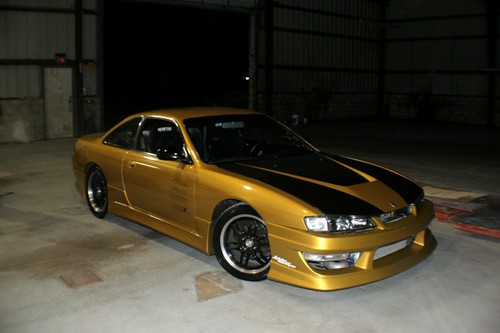
9. **Nissan 240SX**
Successor to Nissan’s 200SX S12, the 240SX (S13: 1989-1994, S14: 1994-1998) is a sporty Japanese hatchback. Powered by a 2.4-liter inline-four, these models are now sought-after, values rising due to dwindling pristine examples.
Popular in drifting communities, many are modified. However, clean, original specimens are increasingly rare, commanding premium prices, typically $10,000-$25,000, an accessible investment.
Tapping into the burgeoning JDM market, its strong chassis and engaging dynamics drew enthusiasts. Its scarcity in original form now fuels investment appeal as a modern classic with proven growth.
Car Model Information: 1997 Nissan 240SX LE
Name: Nissan 240SX
Manufacturer: Nissan
Class: Sports car
Production: 1988–1998
Layout: FR layout
Caption: 1990 Nissan 240SX SE Hatchback (S13) in the USA.
Platform: Nissan S platform
Assembly: Kanda, Fukuoka
Related: Nissan Silvia,Nissan 180SX
Predecessor: Nissan Silvia#S12
ModelYears: 1989-1998
Categories: 1990s cars, All articles needing additional references, All articles to be expanded, All articles with unsourced statements, Articles needing additional references from June 2008
Summary: The Nissan 240SX is a sports compact car that was introduced to the North American market by Nissan in 1988 for the 1989 model year. It replaced the outgoing 200SX (S12) model. Most of the 240SXs were equipped with the 2.4-liter inline-four engine (KA24E from 1989 to 1990 and KA24DE from 1990 to 1998). The KA24E had a single overhead cam and the KA24DE had dual overhead cams. Two distinct generations of the 240SX, the S13 (1989–1994) the S14 (1994-1998) were produced, based on the Nissan S platform.
The 240SX is closely related to other S platform based vehicles, such as the Japanese-market Silvia and 180SX, and the European-market 200SX. Although their names are similar, the 240SX is unrelated to the 240Z or the 280ZX.
The 240SX is known for its popularity within drifting and tuner culture. However, due to the popularity of the S-chassis in drifting and related competitions, prices for vehicles and parts have greatly increased due to higher demand. This problem is sometimes known as “drift tax”.
Get more information about: Nissan 240SX
Buying a high-performing used car >>>
Brand: Nissan Model: 240SX
Price: $49,995 Mileage: 152,446 mi.
Read more about: Beyond the Luster: 15 Luxury Cars That Dazzle Visually But Disappoint Behind the Wheel, According to Owners and Experts
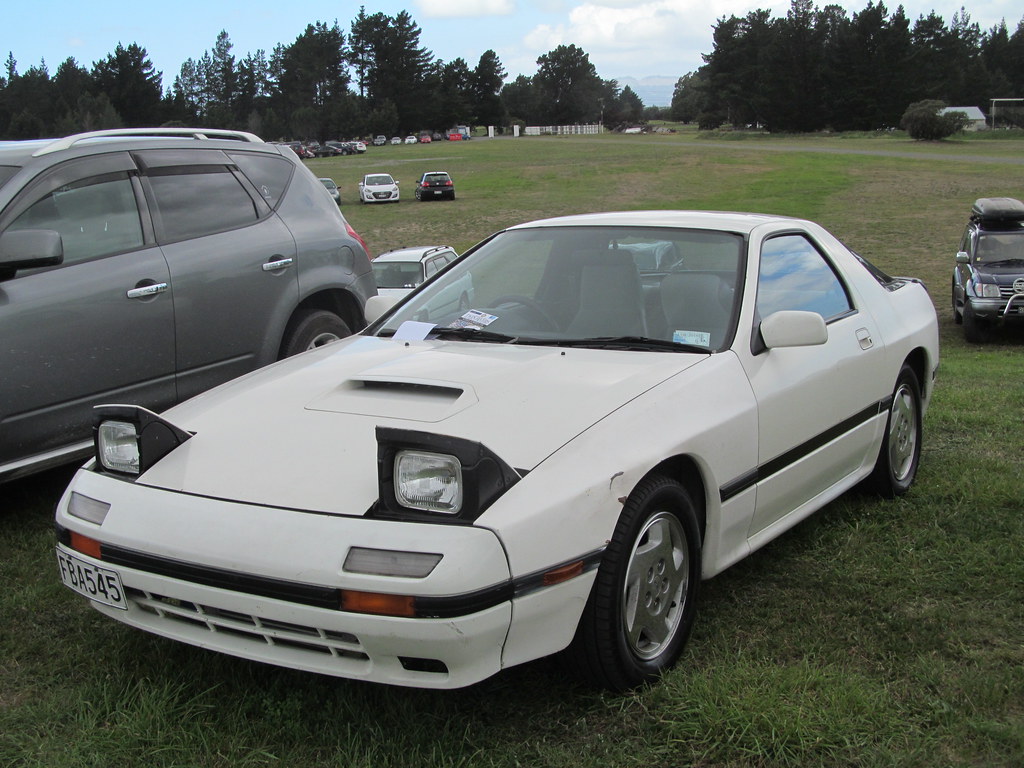
10. **Porsche 924/944**
Once dismissed as “rebadged Volkswagens,” the Porsche 924/944 market perception dramatically shifted. Their value surge reflects a broader trend across vintage Porsches, highlighting the brand’s enduring strength.
Financially, these front-engined, water-cooled Porsches are stellar investments. Lower entry points compared to 911s, combined with Porsche’s heritage and value trajectory, make them highly attractive.
Desirable years are 1976-1991, with various inline-four engines. Meticulous engineering ensures well-maintained examples provide engaging driving, positioning them as astute investments.
Read more about: Future Fortunes on Four Wheels: 14 Classic Cars You Need to Buy Now Before Their Value Explodes

11. **Renault 5 GT Turbo**
The Renault 5 GT Turbo, a homologated Euro classic, descends from an iconic Group B rally car. This motorsport pedigree makes it a thrilling drive and potentially the fastest-appreciating classic under six-figures.
Its financial performance is exceptional, with reports of 25% value increases last year. High collector demand for its unique characteristics and distinctive ultra-widebody aero kit drives this rapid appreciation.
Desirable investment years are 1980-1986, with turbocharged 1.4L or 1.5L Inline-Four engines. For investors seeking excitement and explosive growth in rally-bred classics, it’s a compelling opportunity.
Car Model Information: 1991 Renault 5 GT Turbo
Name: Renault 5
Caption: Renault 5 GT Turbo
Manufacturer: Renault
Production: 1972–1996
Class: Supermini car
Successor: Renault Clio,Renault Twingo
Categories: 1980s cars, 1990s cars, Articles with French-language sources (fr), Articles with Spanish-language sources (es), Articles with short description
Summary: The Renault 5 is a five-passenger, three or five-door, front-engine, front-wheel drive hatchback supermini manufactured and marketed by the French automaker Renault over two generations: 1972–1985 (also called R5) and 1984–1996 (also called Super 5 or Supercinq). The R5 was marketed in the United States and Canada as Le Car, from 1976 until 1983. Renault marketed a four-door sedan variant, the Renault 7, manufactured from 1974 until 1984 in Spain by Renault’s subsidiary FASA-Renault and exported to select markets. The Renault 5 became the best-selling car in France from 1972 until 1986, with a total production exceeding 5.5 million over 14 years, making it France’s most popular car.
Get more information about: Renault 5
Buying a high-performing used car >>>
Brand: Renault Model: 5 GT Turbo
Price: $25,849 Mileage: 16,061 mi.
Read more about: Unleashing the Beasts: A Deep Dive into the 7 Greatest Euro Hot Hatches of the 2000s that Still Thrill Enthusiasts
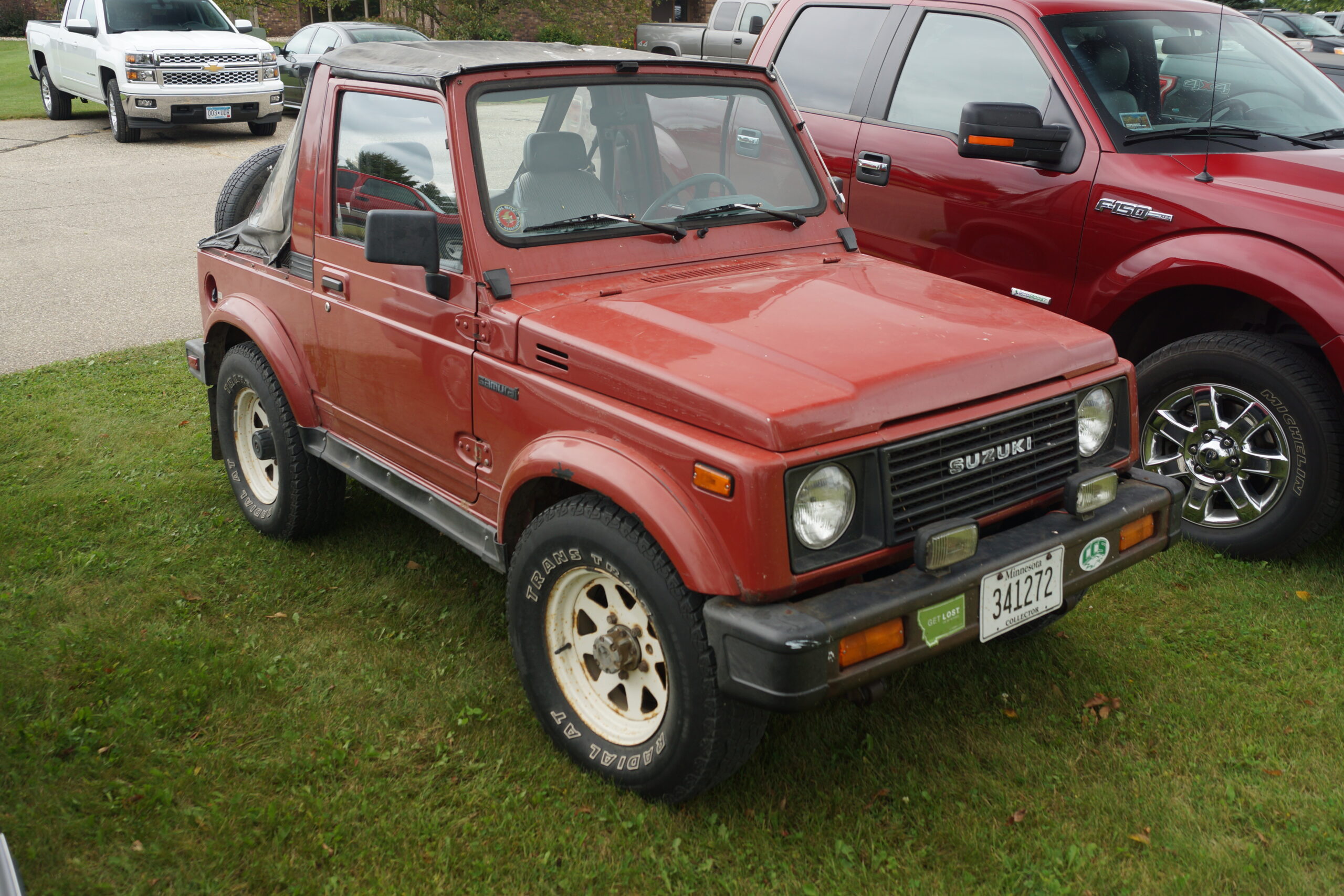
12. **Suzuki Samurai**
Once a quirky, affordable 4×4, the Suzuki Samurai has evolved into a legitimate collector car. Its utilitarian nature and off-road prowess initially drew appeal, now a dedicated following drives up its market value.
Its relatively low entry price, averaging $10,000, makes it highly accessible for investors. This affordability, combined with robust off-road capabilities, offers an attractive alternative to pricier vintage 4x4s.
Desirable years are 1985-1995, powered by a dependable 1.3L Inline-Four. As the vintage utility market matures, the Samurai stands out as an undervalued asset, blending practicality, heritage, and community.
Car Model Information: 1987 Suzuki Samurai Base
Name: Suzuki Jimny
Caption: 1987 Suzuki Jimny SZ5
Manufacturer: Suzuki
Production: April 1970 – present (2.85 million units sold by September 2018)
Class: Off-road vehicle,mini SUV
BodyStyle: SUV,van,convertible,pickup truck
Layout: Front-engine, rear-wheel-drive layout,Front-engine, four-wheel-drive layout
Chassis: Body-on-frame
Related: Maruti Gypsy
Categories: 1980s cars, 1990s cars, 2000s cars, 2010s cars, All articles with minor POV problems
Summary: The Suzuki Jimny (Japanese: スズキ・ジムニー, Suzuki Jimunī) is a series of four-wheel drive off-road mini SUVs, manufactured and marketed by Japanese automaker Suzuki since 1970. Originally belonging to the kei class, Japan’s light automobile tax/legal class, the company continues to market a kei-compliant version for the Japanese and global markets as the Jimny, as well as versions that exceed kei-class limitations. Suzuki has marketed 2.85 million Jimnys in 194 countries through September 2018.
Get more information about: Suzuki Jimny
Buying a high-performing used car >>>
Brand: Suzuki Model: Samurai
Price: $17,500 Mileage: 1,000 mi.
Read more about: The Ultimate Nineties Rewind: 15 Coolest Cars of the Decade That Still Fuel Our Automotive Dreams
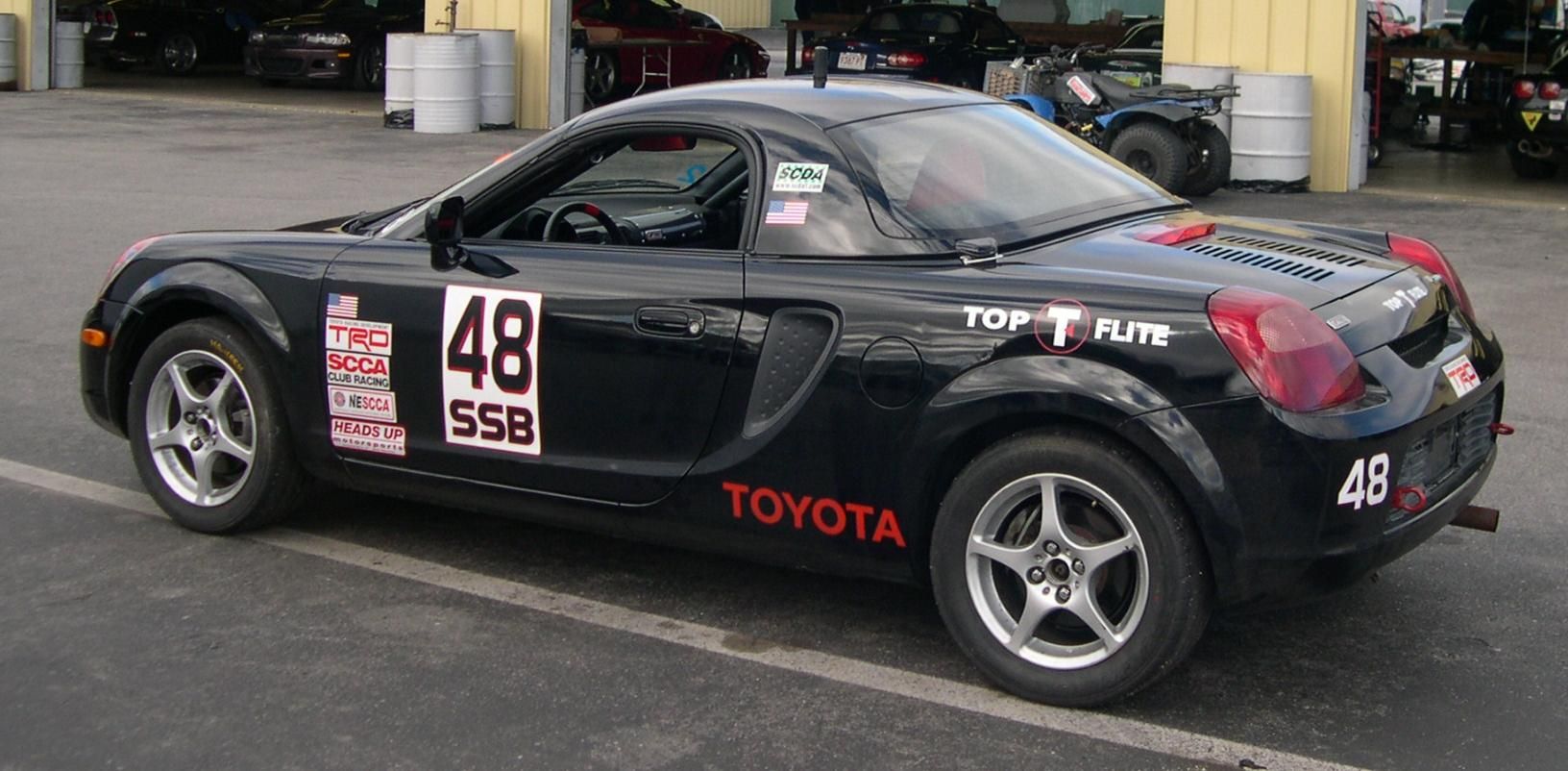
13. **Toyota MR2**
The Toyota MR2, Japan’s first rear mid-engined production car, offered exotic yet affordable sports car status. First two generations delivered a driving experience typically reserved for pricier European marques, backed by extensive motorsport campaigns.
Its design ingenuity and performance drive investment potential. Mid-engine layout ensures exceptional balance and handling, providing a pure, engaging driving experience cherished by enthusiasts.
Desirable years span 1984-1999, with 1.5L, 1.6L, and supercharged 1.6L Inline-Four engines. Its rising appreciation reflects recognition for Japanese engineering and its pioneering, motorsport-proven classic status.
Car Model Information: 1988 Toyota MR2 Supercharged
Name: Toyota MR2
Caption: Second generation MR2
Manufacturer: Central Motors
Aka: Toyota MR (France and Belgium)
Production: 1984–2007
Assembly: Sagamihara, Kanagawa
Class: Sports car
Layout: Rear mid-engine, rear-wheel-drive layout
ModelYears: 1985–2007
Categories: 1990s cars, 2000s cars, All Wikipedia articles written in American English, All articles containing potentially dated statements, All articles needing additional references
Summary: The Toyota MR2 is a line of two-seater, mid-engined, rear-wheel-drive sports cars, manufactured in Japan and marketed globally by Toyota from 1984 until 2007 over three generations: W10 (1984–1989), W20 (1989–1999) and W30 (1999–2007). It is Japan’s first rear mid-engined production car.
Conceived as a small, economical and sporty car, the MR2 features a straight-four engine, transversely mounted in front of the rear axle, four-wheel disc brakes, and fully independent coilover suspension – MacPherson struts on each wheel.
The name MR2 stands for either “mid-ship run-about 2-seater” or “mid-engine, rear-wheel-drive, 2-seater”. In French-speaking markets, the vehicle was renamed Toyota MR because the abbreviation “MR2” sounds like the profanity “merdeux” when spoken in French.
Get more information about: Toyota MR2
Buying a high-performing used car >>>
Brand: Toyota Model: MR2
Price: $27,000 Mileage: 36,611 mi.
Read more about: Wrench Warrior’s Woes: 15 Car Models That Owners Say Are a Nightmare to Repair
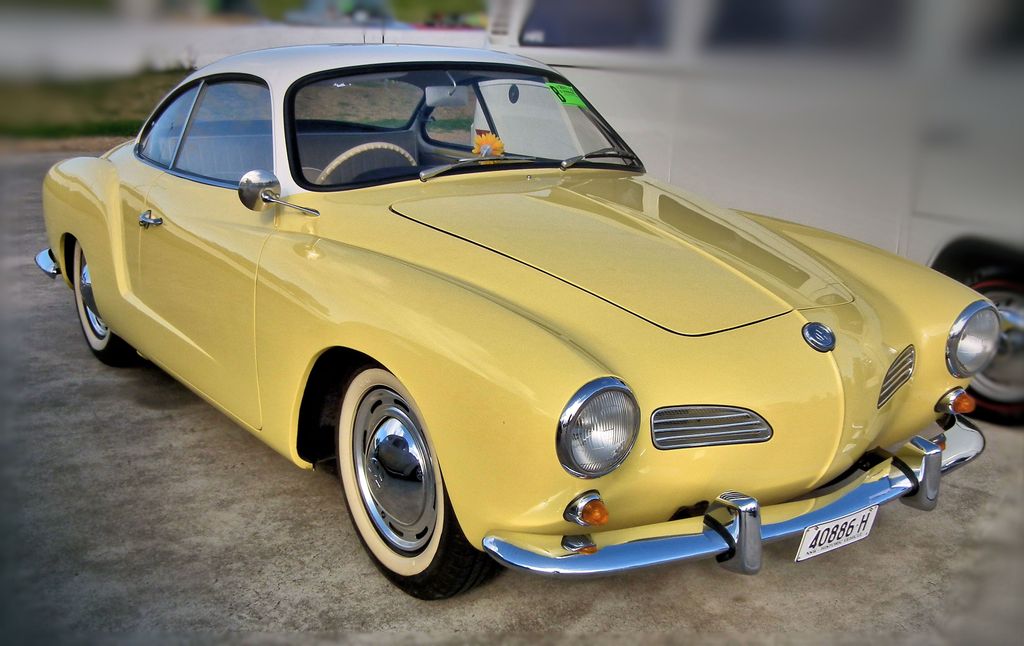
14. **Volkswagen Karmann Ghia**
The VW Karmann Ghia is a stunning classic, affordable now but poised for significant appreciation. Built on the Type 1 Beetle platform, its elegant bodywork by Ghia and Karmann blends accessible mechanics with sophisticated European design.
This unique blend offers iconic aesthetics of a grand tourer with Beetle reliability and easy maintenance. This dual appeal attracts investors and enthusiasts seeking a beautiful, drivable classic.
It can be driven regularly without detracting from long-term value. Desirable years 1955-1974, powered by 1.2L to 1.6L Flat-Four engines, solidifying its smart asset status.
Car Model Information: 1962 Volkswagen Karmann Ghia
Name: Volkswagen Types 14, 34, and 145
Caption: 1962 Volkswagen Karmann Ghia
Manufacturer: Volkswagen
Production: Germany,Type 14: 1955–1974,Type 34: 1961/1962–1969, 445,238 total units built:,Coupé: 364,401 (Type 14 and 34),Cabriolet: 80,837 (all Type 14) Brazil,Type 14: 1962–1971,TC (Touring Coupé): 1972–1975, 41,689 total units built:,Coupé: 23,393,Cabriolet: 177,TC (Touring Coupé): 18,119
Related: Volkswagen Beetle,Volkswagen Type 3,Puma (car manufacturer)#Volkswagen era
Class: Sports car
BodyStyle: convertible (car)
Engine: flat-4
Designer: Carrozzeria Ghia
Layout: RR layout
Successor: Porsche 914,Volkswagen Scirocco,Volkswagen SP2
Assembly: Osnabrück
Categories: 1960s cars, 1970s cars, All articles with unsourced statements, Articles with short description, Articles with unsourced statements from May 2023
Summary: The Volkswagen Karmann Ghia are a family of three overlapping sports car models produced by Volkswagen, marketed in 2+2 coupe (1955–1975) and 2+2 convertible (1957–1975) body styles, though German production ended one year before that in Brazil. Internally designated the Type 14 (1955–1975), the Type 34 (1962–1969), and the Type 145 TC (1972–1975; Brazil), the Karmann Ghia cars combined the floorpans and mechanicals of the Type 1 / Beetle or Type 3 ‘ponton’ models with styling by Italy’s Carrozzeria Ghia, and hand-built bodywork by German coachbuilding house Karmann. The 1955 Type 14 Karmann Ghia was just the second Volkswagen passenger car ever produced, after the Beetle, and launched six years before the Type 3 notchbacks, fastbacks and Variants (squarebacks). They were faster and more expensive than the Beetle, but very cramped in the back, despite their wider, postwar and nearly slabsided body design. Two years later, in 1957, a convertible was added. In 1961, the Karmann Ghia briefly lost its title of fastest Volkswagen, upon launch of the more powerful 1500cc Type 3 models, but later that year, Volkswagen, Ghia, and Karmann presented an all new Karmann Ghia – Type 34, using the Type 3’s floorpan and 1500cc powertrain. Made from 1962 to 1969, this had both new, more modern, angular and roomier bodywork; and a new, more luxurious interior, making it substantially more expensive than all other VW passenger cars. Additionally, the Type 34 was one of the world’s first cars with a power operated steel sunroof option. The Type 34 Karmann Ghia thus became VW’s range-topper again – costing up to twice the price of a Beetle – while the cheaper Type 14 remained in production. Only the latter offered a convertible. Failure to offer the Type 34 in the United States – the Karmann Ghia’s most important market – combined with high pricing elsewhere likely contributed to limited sales, and after the type 14 also received the 1500cc engine in 1967, production of Type 34s was ended during 1969. Volkswagen of Brazil nevertheless looked for an alternative in its market segment, and so Carrozzeria Ghia was again commissioned, to design a third Karmann Ghia model, for the South American market, the Karmann Ghia TC (Touring Coupé), made in Brazil from 1972–1975. The result was a stylish, rakish fastback that offered good interior space for a 2+2 car. For its final model year, the vestigial rear seat in the Type 14 was discontinued for North American models, as it lacked provisions for seat belts; all Karmann Ghias for 1974 were marketed strictly as two-seaters. More than 445,000 Karmann Ghias were produced in Germany over the car’s production life, not including the Type 34 variant. Volkswagen do Brasil (Volkswagen Brasil) produced 41,600 Type 34s in Brazil for South America between 1962 and 1975. Long noted for its exterior styling, the Karmann Ghia was designed with input from numerous individuals at Carrozzeria Ghia and was strongly influenced by Virgil Exner’s work, though all of its designers passed without a definitive individual styling attribution.
Get more information about: Volkswagen Karmann Ghia
Buying a high-performing used car >>>
Brand: Volkswagen Model: Karmann Ghia
Price: $25,849 Mileage: 16,061 mi.
Read more about: Beyond the Badges: 10 Revolutionary 1960s Sports Cars Only True Collectors Will Recognize
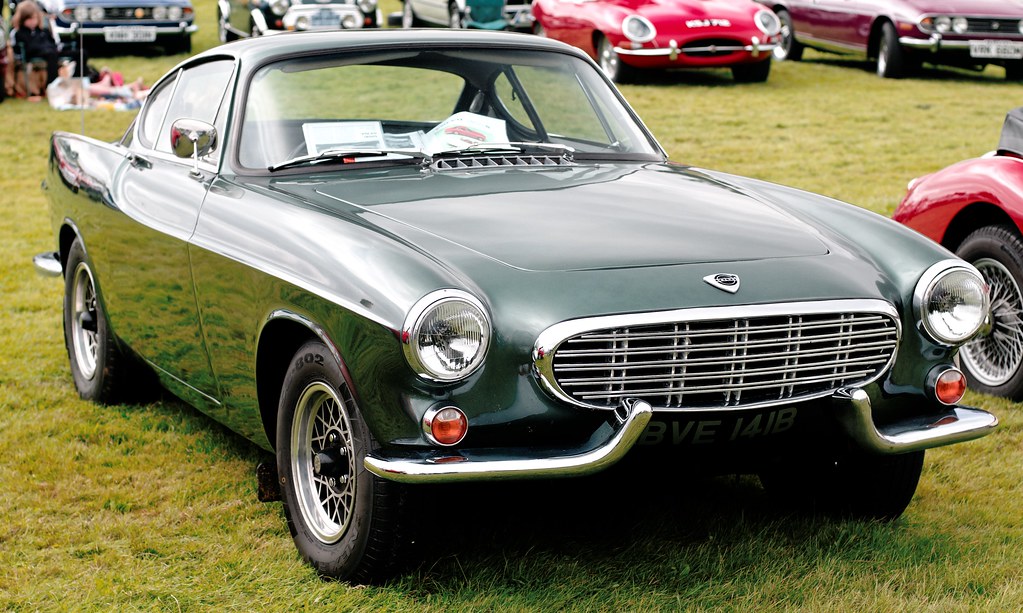
15. **Volvo 1800S**
The Volvo 1800S is an objective automotive classic, boasting a sleek midcentury design. Clean examples fetch $20,000-$60,000, but shrewd investors find neglected specimens for a few thousand, offering profitable restoration.
Famously driven by Roger Moore in “The Saint,” it possesses strong pop culture cachet, enhancing desirability. Its robust construction and Volvo’s reliability make it a practical classic to own.
Desirable years are 1961-1973, with dependable 1.8L or 2.0L Inline-Four engines. This blend of European grand tourer styling, pop culture significance, and durability positions it as a compelling long-term investment.
—
**General Considerations for Classic Car Investment**
Beyond individual models, understanding the market’s benefits, challenges, research strategies, trends, risks, and expert advice is paramount for successful classic car investment.
**Upsides**
Classic cars yield stellar financial returns, some appreciating 25% annually, with 500% value increases since 2000 for specific models. Beyond profit, owners gain unique experience, preserve history, and join a vibrant community, offering rewards beyond traditional investments.
**Downsides & Risks**
Beware of misrepresentation and difficult long-term value prediction. Costs for storage, maintenance, and rare parts are significant. Specialized insurance and secure housing add overhead. Classic cars are illiquid, long-term investments, and profits face capital gains tax.
**Research & Acquisition**
Passion is paramount; love for a car offsets ownership costs. Budget comprehensively. Research history, variants, and value trends; seek expert advice. Acquire from diverse sources, always getting a professional appraisal or mechanic’s evaluation.
**Key Factors Affecting Value**
**Originality** (matching numbers) is crucial; modifications devalue. **Rarity** (limited production, unique features) boosts worth. **Documentation** (ownership, service history) provides provenance. **Historical Significance**, **Appearance**, documented **Competition History**, and **Previous Ownership** all enhance investment potential.
**Market Trends & Expert Strategies**
Experts confirm viability. Younger buyers favor “Radwood-era” (1980s-1990s) and Japanese classics. Live auctions regain prominence. Strategies include rigorous market analysis, asset selection (historical significance, originality), analytical valuation, and diversification for maximized returns.
**An Ending Paragraph of the Article**
Car Model Information: 1965 Volvo 1800S
Name: Volvo P1800
Caption: 1965 Volvo 1800S
Designer: Pelle Petterson
Manufacturer: Volvo Cars
Assembly: West Bromwich,Torslanda,Gothenburg,Arica
Production: 1961–1973,coupé: 39,407,sports estate: 8,077
Layout: Front-engine, rear-wheel-drive layout
Transmission: Volvo M40 transmission,Overdrive_(mechanics)#In_Europe,Borg-Warner 35 transmission
Length: convert
Width: 1700 mm
Abbr: on
Height: convert
Weight: convert
Wheelbase: 2450 mm
Related: Volvo Amazon
Engine: Volvo B18 engine#B18,Volvo B18 engine#B20
Class: Sports car
BodyStyle: coupe,shooting brake
Predecessor: Volvo P1900
Categories: 1970s cars, All articles needing additional references, All articles with dead external links, All articles with unsourced statements, Articles needing additional references from March 2018
Summary: The Volvo P1800 (pronounced eighteen-hundred) is a 2+2, front-engine, rear-drive sports car manufactured and marketed by Volvo Cars between 1961 and 1973. Originally a coupé (1961–1972), it was also offered in a shooting brake configuration toward the end of its production (1972–1973). Styling was by Pelle Petterson under the tutelage of Pietro Frua when Frua’s studio was a subsidiary of the Italian carrozzeria Ghia, and the mechanicals were derived from Volvo’s Amazon/122 series. Marketed as a touring car rather than a sports car, the P1800 became widely known when driven by British actor Roger Moore in the television series The Saint, which aired from 1962 to 1969. In 1998, an 1800S owned by Irv Gordon (1940–2018) was certified as the highest mileage private vehicle driven by the original owner in non-commercial service—having exceeded 3.25 million miles (over 5.23 million km) as of his death in 2018.
Get more information about: Volvo P1800
Buying a high-performing used car >>>
Brand: Volvo Model: 1800S
Price: $62,997 Mileage: 11,747 mi.
Read more about: Beyond the Badges: 10 Revolutionary 1960s Sports Cars Only True Collectors Will Recognize
Ultimately, navigating the classic car investment landscape intertwines financial acumen with genuine automotive passion. While significant returns are possible, the true magic lies in the tactile experience, historical connection, and vibrant community of preserving these mechanical marvels. By understanding both thrills and practicalities, investors can confidently steer towards a collection that is as rewarding to own as it is financially sound.

